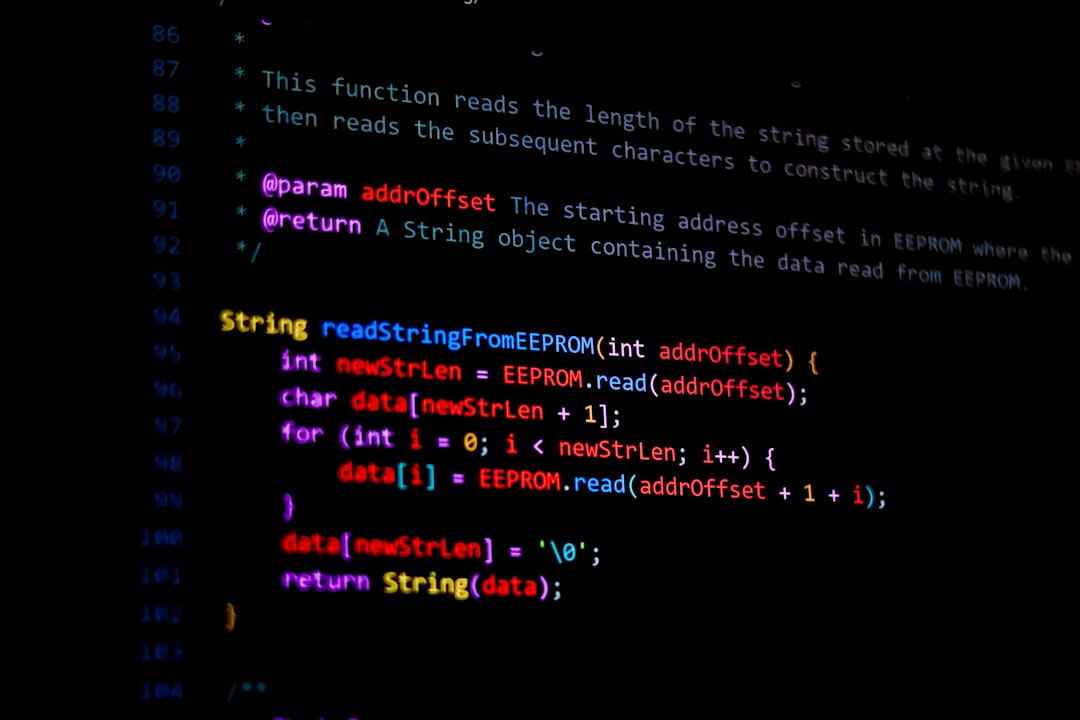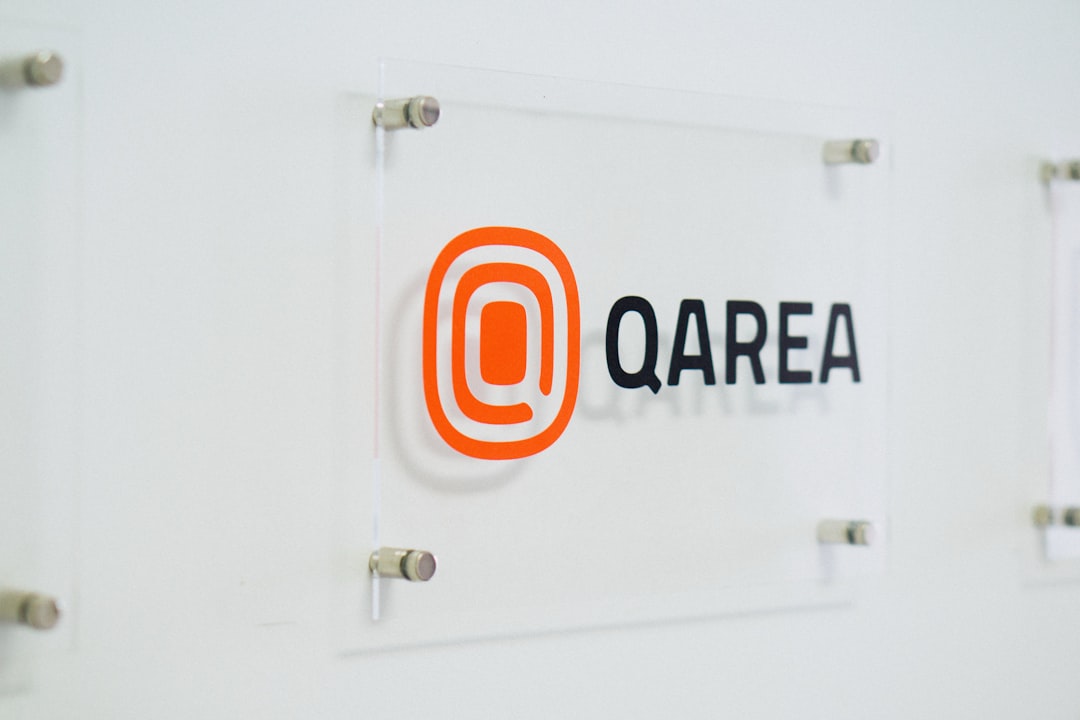

Engage prospects with a scan and streamline customer engagement with FREE QR code marketing tools by Sona – no strings attached!
Create a Free QR CodeFree consultation

No commitment

Engage prospects with a scan and streamline customer engagement with FREE QR code marketing tools by Sona – no strings attached!
Create a Free QR CodeFree consultation

No commitment
Modern marketing software companies are transforming how businesses engage their audiences and measure campaign success. As digital channels become saturated, driving conversions from offline touchpoints remains a challenge for growth marketers, demand generation leaders, and sales executives. Offline prospects often interact at events, review printed materials, or engage with product packaging, interactions that frequently go unrecorded in CRM systems, leading to missed opportunities and limited insight into true pipeline drivers.
QR codes in marketing offer a versatile and frictionless connection between physical and digital touchpoints. With a simple scan, prospects and customers move seamlessly from static assets such as brochures or signage to personalized landing pages, interactive forms, or exclusive offers. This integration not only streamlines the customer journey but also reveals engagement insights that traditional offline tactics miss. Marketers gain powerful attribution capabilities, enabling them to track, segment, and retarget high-value audiences in real time, even when first-party data or form submissions are lacking. Recent findings from the QR code survey highlight these adoption trends.
Strategically embedding QR codes into key campaign assets and using advanced analytics for journey mapping and CRM enrichment can unlock significant improvements in conversion rates, engagement metrics, and lead quality. This article explains how QR solutions with audience identification, predictive intent scoring, and true cross-channel attribution help marketing software companies overcome challenges such as missing high-value prospects or failing to tie revenue to offline activities, maximizing results for both marketers and their clients.

Offline prospect interactions can be challenging to quantify, making it easy to miss high-value leads who engage without leaving a digital trace. QR codes connect offline engagement to digital outcomes, helping marketing software companies increase conversions and improve the ROI of their marketing efforts. By placing scannable entry points on every physical asset and routing activity directly into your marketing stack, you reduce friction for buyers and give your team the data it needs to act in the moment.
Think about the analog processes that still slow outcomes. Printed brochures with long URLs, sign-up sheets at events, fishbowl business card drops, and paper feedback forms all create drop-off and data quality issues. A QR-driven flow replaces those manual steps with instant, trackable actions like demo bookings, trial activations, or newsletter subscriptions. With dynamic codes and a platform like Sona QR, you can also update destinations in real time, retarget scanners, and attribute revenue without reprinting anything.
Modern tools can automate journey mapping, scan attribution, and CRM enrichment, allowing marketers to identify overlooked prospects and convert anonymous engagements into measurable business outcomes. When combined with a thoughtful landing experience and frictionless forms, QR codes become a lever for faster time to value, higher lead quality, and improved conversion rates from the very first offline touch.

Offline and hybrid buyer journeys create attribution blind spots in the sales funnel. Prospects researching at events, picking up brochures, or scanning on-site materials often remain anonymous unless a digital bridge is provided. QR codes close this gap by making every physical impression measurable and by enabling your team to route engagement to the right offer, message, and owner within seconds. For companies selling marketing software, that means stronger ABM alignment, cleaner intent signals, and a direct path from interest to trial or demo.
The speed and simplicity of scanning also improve user experience. No one wants to type long URLs in a crowded expo hall or interrupt a conversation to fill out a paper form. With a scan, a buyer can save a pricing sheet, schedule a meeting, or start a trial before they leave your booth. Dynamic routing extends value even further, since you can update the destination for a conference code after day one if a different offer is outperforming, or point packaging inserts to a new onboarding video without reprinting.
These advantages help marketers prevent the loss of anonymous, high-fit prospects and enable nurturing and retargeting even when forms are not submitted. For marketing software companies competing in crowded categories, this translates into more first-party data, tighter ABM execution, and a clearer view of which offline efforts are moving the needle.

Marketing software companies deploy a range of QR code types to address specific engagement challenges. Choosing the right format ensures that the scan triggers the outcome you want, whether that is a scheduled demo, an app download, or a saved sales contact. In many B2B software settings, the most valuable formats are those that reduce friction to booking, start a self-serve trial, or collect verified contact data.
Pair each format with a relevant destination and a landing experience built for speed. For instance, if your goal is to convert event traffic into qualified demos, use a direct scheduler link rather than a general landing page. If you are distributing onboarding guides in customer shipments, send scanners to a getting-started hub that recognizes their plan tier and product.
This versatility lets marketing teams resolve issues like anonymous demo interest or lost attribution, customizing QR usage to strategic priorities. With Sona QR, you can generate and manage all formats centrally, apply UTMs consistently, and sync outcomes to your CRM for reliable reporting.

The highest-value engagement often happens in offline moments where data capture is toughest. Trade shows, partner roadshows, and on-site workshops still drive a large share of first touches and late-stage acceleration in the B2B software buying cycle. QR codes turn those moments into measurable conversion points by making it effortless to take a next step and by providing clean source and placement data for attribution. For inspiration, see top QR campaigns.
Look at your physical footprint and sales motions to identify where attention is already high but data is sparse. Then place QR codes that map to the next best action for that context. For example, on a booth wall use a demo scheduler, on onboarding inserts use a quickstart video, and on direct mail for ABM targets use a personalized offer with an account-specific landing page.
Mapping these offline-to-online handoffs ensures marketers surface incremental pipeline and convert previously invisible intent signals. Over time, you will see patterns in which placements drive higher-quality scans and which messages accelerate deals, informing both creative and budget allocation.
Strategic QR implementations solve real funnel challenges across awareness, consideration, and conversion. Start with three to five high-impact use cases that plug into your revenue motions, then expand once you have proven the lift. Each use case should have a clear owner, a specific target metric, and a tightly aligned landing experience.
The examples below reflect common customer interactions for marketing software companies and the outcomes that matter to revenue teams. Adapt the CTA and destination to your product model, whether that is sales-led demos, product-led trials, or hybrid motions.
These solutions ensure even brief offline engagements contribute to follow-up and nurturing strategies. They also create a repeatable playbook for field marketing, customer marketing, and partnerships teams to source and influence pipeline with clearer attribution.
A persistent challenge in marketing software is the inability to retarget prospects who signal in-person interest but never share contact details. Each QR scan captures intent, context, and behavior, which can be used to create audiences for personalized ads, email nurtures, and sales outreach. When connected to your CRM and marketing automation platforms, scan data becomes a trigger for the next best action. For step-by-step tactics, use Sona’s retargeting playbook.
Design your QR program with segmentation in mind from the start. Assign a unique code to each journey stage, channel, and use case so you can distinguish casual browsers from decision-makers, partners from end users, and prospects from customers. The richer your tagging, the more precise your retargeting.
Advanced segmentation tools link scan data to CRM fields and lead scoring, helping your team prioritize outreach and ad spend. Over time, this approach reduces wasted impressions and increases conversion rates by aligning creative and offers with real-world behavior.
Disconnected channels lead to attribution gaps and obscure pipeline measurement. QR codes close this gap by embedding measurable touchpoints across every offline and hybrid channel, while centralizing data collection into your analytics and CRM stack. They act as connectors between brand, demand, and field marketing, enabling you to measure performance holistically rather than in silos. For broader context, see this QR marketing guide.
When planning campaigns, map where QR-triggered actions fit within your existing flows across web, email, ads, events, and direct mail. Then ensure that each scan leads to a landing experience that fits the channel and device context. A scan from a trade show wall should go to a short, mobile-optimized form, while a scan from a mailed booklet could lead to a richer product tour since the user has more time.
QR codes serve as the offline onramp to your digital marketing engine. They also unlock a new layer of data collection across channels that were once difficult to measure. With a centralized platform like Sona QR, you can manage all your codes, monitor performance, and sync scan data with your CRM and ad platforms to build a connected, multi-touch journey.
Effective QR campaigns address both logistics and data capture. The goal is to eliminate friction for scanners while giving your team the context needed to personalize follow-up and prove revenue impact. Treat each QR deployment like a mini funnel, with a clear promise, a fast-loading destination, and instrumentation for attribution and retargeting.
Below is a practical checklist that you can use to plan and launch a QR campaign tailored to marketing software buyers. It includes industry-specific examples and tactics that map to common motions like events, ABM direct mail, and customer onboarding.
Start by defining a single business outcome and a specific audience. Align the QR code’s purpose with the next best action for that audience, for example booking a demo with a qualified buyer or starting a free trial for hands-on evaluators. Make the outcome explicit in your CTA so scanners know exactly what they will get.
Choose the format that directly supports your outcome. In most B2B software scenarios, dynamic web link codes provide the right balance of trackability and flexibility. If contact transfer or support requests are your goal, vCards and SMS formats can help.
A scannable, visible code with a clear promise drives higher engagement. Design the visual frame to stand out in the environment and reduce scanning friction by following size, contrast, and distance best practices.
Place codes where untracked engagement is common and where the scanning context supports your ask. Prioritize channels used heavily in marketing software, such as conferences, partner roadshows, print collateral for ABM, and onboarding inserts for product-led growth.
Treat scans like a performance channel. Set up analytics from day one, monitor real-time results, and iterate on creative, placements, and destinations based on actual behavior.
Modern QR solutions automate code creation, scan tracking, and attribution, ensuring no valuable prospects are lost. With a disciplined process and centralized management, you can scale QR deployments across teams while maintaining consistent quality and reporting.

Robust tracking is essential for linking offline actions to revenue. It is not enough to know that a scan happened. You need to understand who scanned, what they did next, and how that engagement influenced pipeline. This requires tying scans to identities when possible, unifying anonymous and known activity, and connecting those events to opportunities and revenue.
Advanced QR analytics make this practical. With Sona QR and Sona, an AI-powered marketing platform for identity resolution and revenue attribution, you can instrument every QR touchpoint, collect rich context, and push insights into your source-of-truth systems. This extends multi-touch attribution into the physical world and helps teams decide which messages, channels, and placements to scale.
Platforms combining anonymous data with identity resolution close historic attribution gaps and enable true optimization of marketing spend. Over time, you will produce a richer model of how offline moments accelerate deals and where to deploy your next dollar for maximum impact.
Driving effective offline-to-online pipeline requires more than code placement. Teams that win treat QR campaigns like high-intent micro funnels, with clear promises, fast destinations, automation-ready data, and consistent follow-up. A small number of best practices will multiply your results across channels and teams.
Focus on tips that align with your most common physical media and buyer journeys. For marketing software companies, that usually means conferences, ABM direct mail, onboarding kits, and partner collateral. The ideas below help you capture more demand at the source and make every scan actionable.
Start creating QR codes for free. Centralize code creation, apply UTMs automatically, and sync scan data with your CRM in minutes, then scale across teams with governance and templates.
Marketing software companies can greatly benefit from embedding QR codes throughout their offline and hybrid customer journeys. The risk of missing high-value prospects, losing engagement data, and failing to connect offline touchpoints to revenue is reduced when you introduce a strategic QR program. Codes placed on event assets, direct mail, packaging, and partner collateral become measurable gateways to demos, trials, and onboarding content, improving lead quality and accelerating time to value.
When deployed strategically, QR codes enable marketing software companies to turn every offline interaction into measurable engagement and revenue. They unify physical and digital marketing, delivering frictionless user experiences and comprehensive data. By integrating advanced QR solutions for tracking, segmentation, and CRM enrichment, marketing leaders can overcome persistent challenges around missing prospects, anonymous engagement, and incomplete attribution. The outcome is higher conversion rates, stronger multi-touch measurement, and lasting business impact driven by a connected customer journey. With Sona QR and Sona, you have everything needed to capture demand at the source, connect scans to revenue, and scale a performance-minded QR strategy across your organization.
QR codes have transformed marketing software companies from simply showcasing features to creating dynamic, measurable conversion channels. Whether it’s driving new customer acquisition, enhancing user onboarding experiences, or delivering personalized engagement, QR codes replace static links with instant, trackable actions that capture real-time data and turn every campaign asset into a powerful growth driver. Imagine knowing exactly which software demos or content pieces lead to sign-ups—and being able to optimize your strategy the moment insights emerge.
With Sona QR, marketing software companies can effortlessly create dynamic, trackable QR codes that update on the fly without costly reprints. Connect every scan directly to user behavior and revenue, retarget high-value prospects, and continuously refine campaigns based on precise analytics. Start for free with Sona QR today and unlock the full potential of every scan to accelerate conversions and grow your software business.
The article highlights Sona QR and Sona as key marketing software companies offering advanced QR code solutions and AI-powered marketing platforms.
They embed QR codes on offline assets like brochures, packaging, and event materials to enable seamless transitions to personalized landing pages, forms, or offers, capturing engagement data and improving attribution.
Marketing software with QR codes improves conversion rates, lead quality, real-time attribution, pipeline visibility, and reduces data loss from offline interactions.
Sona QR and Sona provide dynamic QR code solutions with tracking, segmentation, and CRM integration that maximize ROI by connecting offline engagement to measurable revenue.
Small businesses can use dynamic web link QR codes, vCards, forms, app download codes, and management platforms like Sona QR that offer easy code creation, tracking, and CRM syncing.
Select software that supports your specific use case, such as demo bookings or onboarding, offers dynamic code capabilities, integrates with your CRM, and provides robust analytics and segmentation.
Current trends include dynamic QR codes with real-time destination updates, AI-powered identity resolution, multi-touch attribution linking offline and online data, and automated retargeting workflows.
They capture scan metadata like location, time, and device, enrich CRM records, enable journey mapping, intent scoring, and unify offline and online touchpoints for deeper audience insights.
Examples include demo booking at events with QR schedulers, onboarding guides via packaging inserts, and referral or upgrade offers on invoices that drive measurable pipeline and revenue.
While the article does not detail specific security measures, it emphasizes integration with trusted CRM platforms and centralized management to maintain data governance and consistent permissioning.
Use Sona QR's trackable codes to improve customer acquisition and engagement today.
Create Your FREE Trackable QR Code in SecondsJoin results-focused teams combining Sona Platform automation with advanced Google Ads strategies to scale lead generation

Connect your existing CRM

Free Account Enrichment

No setup fees
No commitment required

Free consultation

Get a custom Google Ads roadmap for your business






Launch campaigns that generate qualified leads in 30 days or less.
